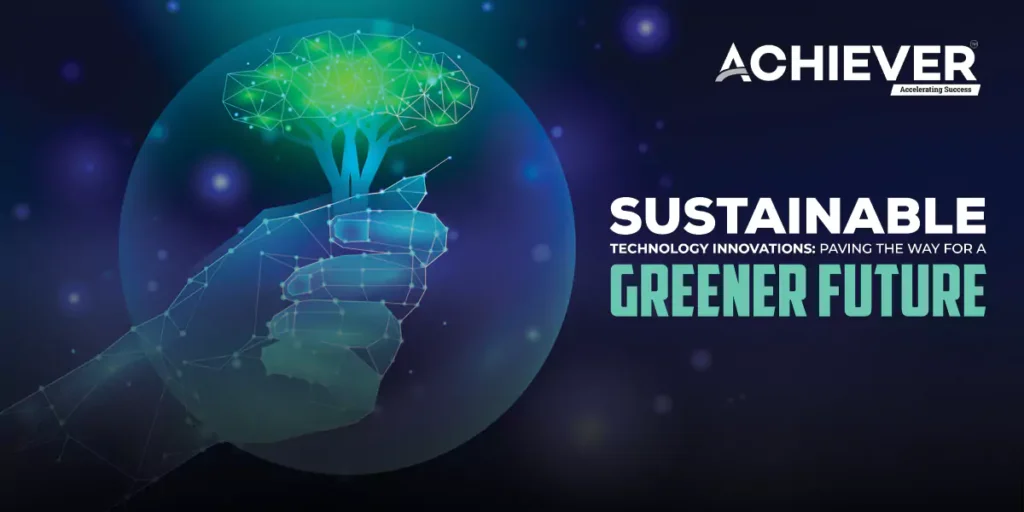In an era where climate change and environmental degradation have become critical global challenges, sustainable technology innovations are emerging as pivotal solutions. These technologies aim to reduce our ecological footprint, enhance energy efficiency, and promote a circular economy. From renewable energy solutions to eco-friendly manufacturing processes, sustainable technologies hold the key to a more sustainable future. Here, we explore some of the most promising innovations reshaping our world for the better.
- Renewable Energy Technologies
The transition from fossil fuels to renewable energy sources is fundamental to achieving sustainability. Significant innovations in this field include:
- Solar Energy: Advances in photovoltaic technology have made solar panels more efficient and affordable. Innovations like bifacial solar panels, which capture sunlight on both sides, and floating solar farms are increasing solar energy production. Additionally, solar energy storage solutions, such as battery systems, are essential for overcoming the intermittency of solar power.
- Wind Energy: Wind turbine technology has evolved, leading to larger, more efficient turbines capable of generating more energy. Innovations like vertical-axis wind turbines and offshore wind farms are expanding the potential for wind energy generation, making it a viable option in various geographic locations.
- Hydropower: New hydropower technologies, such as small modular hydropower systems and hydropower storage solutions, are being developed to minimize environmental impact while maximizing energy output. These innovations can provide clean energy in regions where traditional large-scale hydropower is not feasible.
- Energy Efficiency Solutions
Improving energy efficiency is crucial for reducing consumption and minimizing environmental impact. Innovations in this area include:
- Smart Grids: Smart grid technology optimizes electricity distribution, allowing for real-time monitoring and management of energy consumption. This technology enhances energy efficiency by enabling consumers to track their usage patterns and make informed decisions about energy consumption.
- Energy-efficient Appliances: The development of energy-efficient appliances, such as smart thermostats, LED lighting, and Energy Star-rated appliances, helps consumers reduce energy consumption. These innovations not only lower utility bills but also contribute to a significant decrease in greenhouse gas emissions.
- Building Automation Systems: Smart building technologies, which integrate sensors and IoT devices, allow for automated control of heating, cooling, and lighting systems. These systems adapt to occupancy patterns, ensuring energy is used efficiently and reducing overall energy consumption.
- Sustainable Transportation
Transportation is a significant contributor to greenhouse gas emissions, making sustainable innovations in this sector critical. Key advancements include:
- Electric Vehicles (EVs): The rise of electric vehicles is transforming the automotive industry. Innovations in battery technology, such as solid-state batteries and fast-charging infrastructure, are improving the performance and accessibility of EVs. Additionally, government incentives and increased charging networks are encouraging widespread adoption.
- Public Transportation: Innovations in public transportation systems, such as electric buses, light rail, and shared mobility solutions (e.g., ride-sharing and bike-sharing), are promoting sustainable urban transport. These systems reduce the reliance on personal vehicles and lower overall emissions in urban areas.
- Alternative Fuels: Research into alternative fuels, such as hydrogen, biofuels, and synthetic fuels, is gaining momentum. These fuels can power vehicles with lower emissions than traditional fossil fuels, contributing to a cleaner transportation sector.
- Circular Economy Innovations
The concept of a circular economy focuses on minimizing waste and maximizing resource efficiency. Innovations supporting this model include:
- Waste-to-Energy Technologies: These technologies convert waste materials into usable energy through processes like anaerobic digestion and incineration. By transforming waste into energy, these solutions reduce landfill waste while generating renewable energy.
- Recycling and Upcycling Innovations: Advances in recycling technologies, such as automated sorting systems and chemical recycling, are improving the efficiency of recycling processes. Upcycling, where waste materials are creatively repurposed into new products, is also gaining popularity, promoting resource conservation.
- Sustainable Packaging: Innovations in biodegradable and compostable materials are addressing the environmental impact of packaging waste. Companies are exploring alternatives to traditional plastic, such as plant-based materials and reusable packaging systems, to reduce waste and enhance sustainability.
- Sustainable Agriculture Technologies
The agricultural sector is a significant contributor to environmental challenges, but innovative technologies are paving the way for sustainable practices:
- Precision Agriculture: Utilizing IoT devices, drones, and data analytics, precision agriculture enables farmers to optimize resource use, minimize waste, and enhance crop yields. These technologies allow for targeted application of water, fertilizers, and pesticides, reducing environmental impact.
- Vertical Farming: Vertical farming uses controlled environments to grow crops in urban areas, maximizing space and minimizing water usage. These innovative systems reduce the carbon footprint associated with transporting food while providing fresh produce to local communities.
- Biotechnology: Advances in biotechnology, such as genetically modified organisms (GMOs) and CRISPR gene editing, can improve crop resilience to climate change and reduce the need for chemical pesticides. These innovations hold promise for sustainable food production in the face of growing global demand.
Conclusion
Sustainable technology innovations are at the forefront of addressing the pressing challenges posed by climate change and environmental degradation. As these technologies continue to evolve, they offer significant potential to reduce our ecological footprint, promote resource efficiency, and enhance the overall quality of life. However, collaboration among governments, businesses, and consumers is essential to accelerate the adoption and development of sustainable technologies. By embracing these innovations, we can pave the way for a greener, more sustainable future for generations to come.







